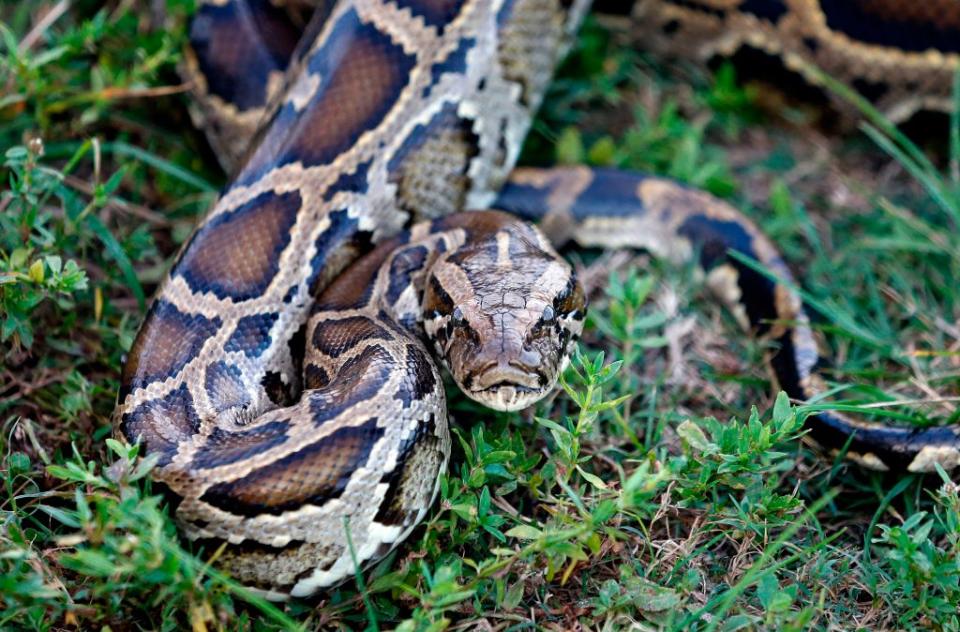

Predators are becoming prey in the Florida Everglades, as a unique challenge works to remove invasive Burmese pythons from the tropical wilderness.
Eight hundred people participated in this year’s Florida Python Challenge. Anyone can register for the challenge and be trained in how to humanely capture and kill the snakes. Winners of the challenge can receive up to $10,000 in prizes.
It’s one of several ways that Florida is working to combat the invasive species. The Burmese python population exploded in the mid-90s after being imported from South Asia as exotic pets. Burmese pythons are usually between six to nine feet but can grow over 15 feet long. They are non-venomous and generally do not attack people or pets, according to the Florida Museum of Natural History, but pose a threat to wildlife indigenous to the area.
Native bird, rabbit, raccoon and deer populations have been decimated, and even gators have fallen prey to the constrictors. They have no natural predators.


The crisis is only growing: A Tufts University study found that climate change could make the entire continental United States hospitable to Burmese pythons by 2050.
“The scope of this python program is so big — we can’t do this alone,” said Zack Chejanovski, who trains hunt participants. “Pythons thrive in warm climate — which is why they’ve quickly adapted here in the Everglades — and they keep spreading; milder winters have led to sightings further north.”
Donna Kalil, who participated in the challenge and is also one of 100 people employed by the state’s Python Elimination Program, said it’s a desire to restore the Everglades that keeps her hunting the reptiles.
“I’m not afraid of that python,” Kalil said. “I’m afraid of it getting away.”
Hunters like Kalil have helped eradicate over 14,000 pythons from the region, but officials say they don’t know if that’s made a dent in the problem: They don’t how many pythons are slithering in the wild. One estimate says that at least 100,000 of the reptiles live in the ecosystem, CBS News previously reported.
“Every python removed from the system makes a difference,” said Mike Kirkland, who runs the hunt and the Python Elimination Program. “Are we winning it right now? Perhaps not, but I’m optimistic.”
Advanced Recycling: Does Big Plastic’s Idea Work? | CBS Reports
Efforts underway to hunt invasive Burmese pythons in Florida
Viral lobsterman documents Maine’s lobster season
